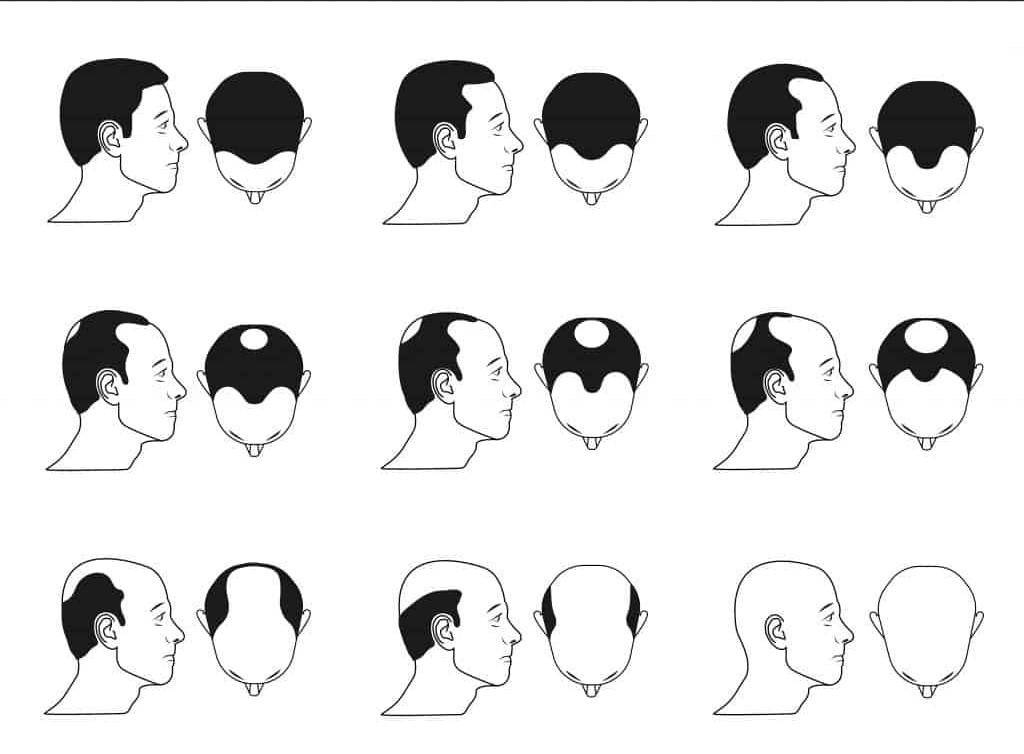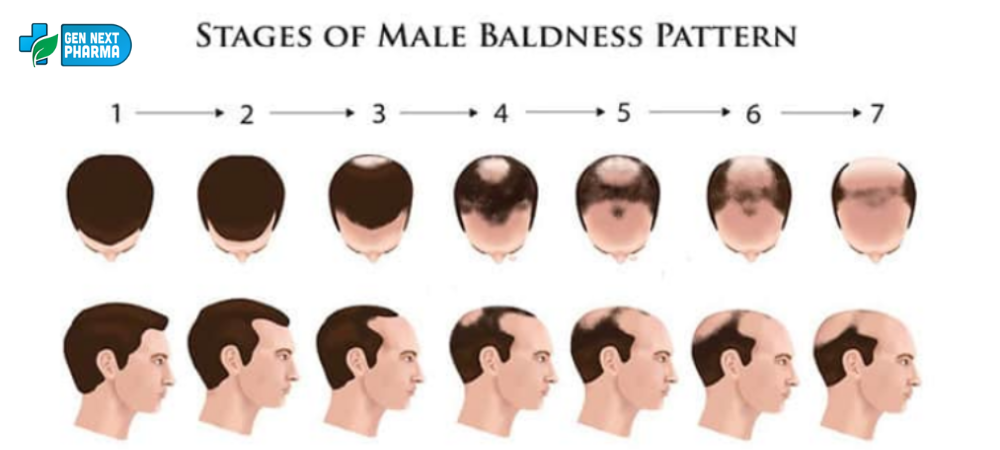Male pattern baldness is a common concern affecting many individuals, and awareness of its stages and available treatments is crucial. Recognizing the progression of male pattern baldness allows for timely intervention. Here, we delve into the stages of male pattern baldness and explore viable treatment options.
Male pattern baldness, affecting many, demands an understanding of its stages and treatments. From subtle temple thinning to severe crown baldness, the stages vary. Genetic links and the role of DHT are crucial. Treatments range from Minoxidil and Finasteride to laser therapy and surgical transplants.
GenNext Pharma in Delhi offers advanced solutions. Early intervention is key for successful management. Don’t let male pattern baldness persist – discover effective treatments at GenNext Pharma.
Stages of Male Pattern Baldness
In our daily lives, the subtle signs of hair loss may go unnoticed until we realize our hair is thinning. Understanding the stages is essential for early intervention.
Stage 1: Unnoticeable Hair Thinning Around the Temple
Initial hair loss around the temple area, often subtle.
Stage 2: Hair Thinning & M-shaped Hairline
Frontal baldness, with increased thinning around the temple and forehead.

Stage 3: Visible Balding & Recession of the Hairline Formation of M, U, or V shapes, widening the forehead.
Stage 4: Massive Hair Loss at The Back of The Head Clear visibility of bald spots, and extensive hair loss at the crown.
Stage 5: Horseshoe or U-shaped Hairline at the Crown The hairline forms a horseshoe shape, challenging to treat.
Stage 6: Visible Scalp & Enlarged Bald Patches Large bald patches, requiring advanced treatments.
Stage 7: Hairline Receded to the Crown & Minimal Hair Minimal remaining hair on the sides, severe baldness.
Is Male Pattern Baldness Inherited?
DHT (Dihydrotestosterone), a male hormone, is linked to male pattern baldness and is often inherited.
Male Pattern Baldness Treatment
Effective treatments exist, ranging from non-surgical to surgical options.
Non-surgical Treatments
- Minoxidil (Rogaine): Lotion-based medication is applied twice daily to reduce hair loss.
- Finasteride: Reduces DHT and its impact on hair follicles, showing results after six months.
Male Pattern Baldness and Lifestyle Factors
Nutrient deficiency, alcohol consumption, and smoking can contribute to male pattern baldness.
Male pattern baldness is a manageable condition with various treatment options. Early detection and intervention significantly impact treatment success. GenNext Pharma, Delhi’s certified clinic, offers cutting-edge treatments, including hair transplants and PRP therapy. Don’t let male pattern baldness become a permanent concern – explore effective solutions at GenNext Pharma.
Frequently Asked Questions
What are the common signs of male pattern baldness that individuals might initially overlook?
Initial signs include unnoticeable hair thinning around the temple area.
How does male pattern baldness progress through its various stages?
It progresses from subtle temple thinning in Stage 1 to severe crown baldness in Stage 7, forming horseshoe or U-shaped hairlines.
Is male pattern baldness linked to genetic factors?
Yes, male pattern baldness is often inherited, with the hormone DHT (Dihydrotestosterone) playing a crucial role.
What are some effective non-surgical treatments for male pattern baldness?
Non-surgical options include Minoxidil (Rogaine), Finasteride, laser treatment, and PRP (Platelet Rich Plasma) therapy.
How can lifestyle factors contribute to male pattern baldness, and what are some common contributors?
Nutrient deficiency, alcohol consumption, and smoking can contribute to male pattern baldness by weakening hair follicles.

